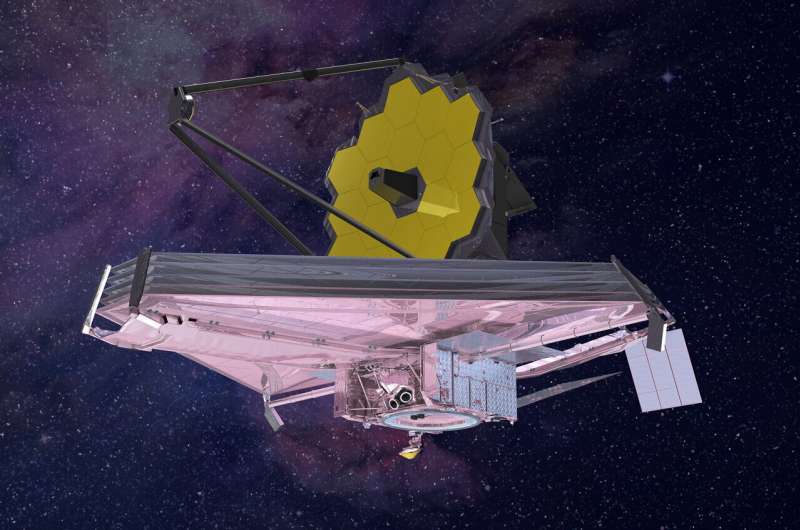
As it undergoes the thermal stability test, NASA's James Webb Space Telescope is experiencing all seasons from hot to cold. The final phase of commissioning involves digging into the details of the science instruments. Before we start routine science operations in the summer, we will measure the performance of the science instruments.
Scott Friedman of the Space Telescope Science Institute (STScI) gives us all the details of the final phase of the project.
With the telescope perfectly aligned and the observatory close to its final temperature, we are ready to begin the last group of activities before the science observations start. I describe a few of the activities here.
The instruments, the Near-Infrared Camera, Near-Infrared Spectrometer, Near-Infrared Imager and Slitless Spectrometer, Mid-Infrared Instrument, and the Fine Guidance Sensor have been powered up. We have operated their mechanisms and detectors. The primary and secondary mirrors of the observatory were aligned using images of isolated stars taken with each of the instruments. We have more work to do before we are ready for the science observations that will reveal the secrets of the universe.
We will begin an extensive suite of calibrations and characterizations of the instruments using a rich variety of astronomical sources. We will measure how much light reaches the detectors and is recorded. No detector records every photon that arrives, and there is always some loss with each reflection by the mirrors of the telescope and within each instrument. We will measure this throughput by observing standard stars whose light emission is known from data obtained with other observatories combined with theoretical calculations.
The calibration of each instrument maps the pixels on the detectors to the precise locations on the sky to correct the small but unavoidable optical distortions that are present in every optical system. We can do this by looking at a small patch of sky in a nearby galaxy. The Hubble Space Telescope was able to establish the coordinates of about 200,000 stars by observing this field. It is necessary to Calibrate this distortion to place the science targets on the instruments field of view. To get the spectrum of a hundred galaxies at the same time, the telescope must be pointed so that each one is in the proper shutter, and there are a quarter of a million shutters.
The telescope will measure the sharpness of the stellar images, which is called the "point spread function." We already know the telescope is delivering to the instruments image quality that exceeds our prelaunch expectations. The light can be passed through filters or spread through a grating to get information about the target. Calibration for interpreting the data is provided by measuring the point spread function within each instrument.
Target acquisition will be tested for each instrument. It is enough to point the telescope at a guide star in the Fine Guidance Sensor and know the location of the science target relative to that guide star for some observations. The science target is placed to an accuracy of a few tenths of a second. In some cases more precision is needed. The star has to be placed behind a mask so its light is not visible to the nearby exoplanet. In time series observations, we measure how an exoplanet's atmosphere absorbs the stellar light during the hours it takes to pass in front of its star. Both of these applications require that the telescope pointing control system be used to put the science target in the correct location.
Observations of moving targets are a final example of instrument commissioning activities. Most of the objects in the sky are far away. This is not the case with the planets, satellites and rings, asteroids, and comets within our own solar system. The observatory has to change its pointing direction to observe these. We will use each instrument to observe asteroids with different apparent speeds.
We are in the last two months of the project's construction before it is ready for its scientific mission. The instruments have important properties to test, measure, and demonstrate. We will be ready to begin the great science programs when these are complete. We are almost there.
Citation: Examining the heart of Webb: The final phase of commissioning (2022, May 6) retrieved 6 May 2022 from https://phys.org/news/2022-05-heart-webb-phase-commissioning.html This document is subject to copyright. Apart from any fair dealing for the purpose of private study or research, no part may be reproduced without the written permission. The content is provided for information purposes only.